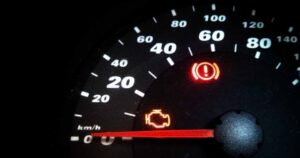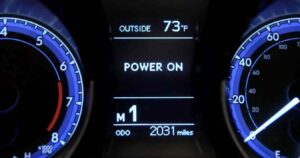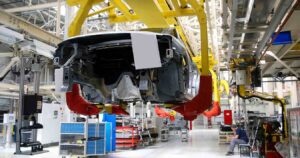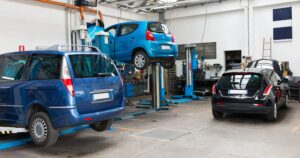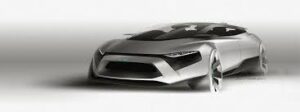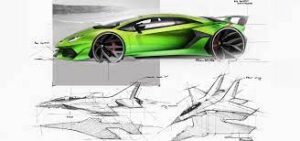In the ever-evolving landscape of automotive technology, the term “range” has become increasingly prominent, especially with the rise of electric and hybrid vehicles.
Range, in the context of cars, refers to the distance a vehicle can travel on a single charge or a tank of fuel. This article aims to delve into the intricacies of what range means in a car, exploring its significance, the factors influencing it, and how it varies across different types of vehicles.
Table of Contents
ToggleDefinition of Range
At its core, range is a measure of the distance a car can cover before requiring a refueling or recharge.
It is typically expressed in miles or kilometers and serves as a crucial metric for both traditional internal combustion engine vehicles and newer electric and hybrid models.
Factors Influencing Range
Several factors contribute to the overall range of a car, and understanding these elements is essential for making informed decisions as a car owner.
Here are some key factors influencing a vehicle’s range:
Fuel Efficiency for Internal Combustion Engines
For traditional gasoline and diesel vehicles, fuel efficiency is a critical factor affecting range.
The efficiency of the engine, transmission, and aerodynamics all play a role in determining how far a car can travel on a full tank.
Battery Capacity for Electric Vehicles
In the realm of electric vehicles (EVs), the range is heavily dependent on the capacity of the vehicle’s battery.
The higher the battery capacity, the more energy it can store, allowing the car to cover greater distances between charges.
Driving Conditions
Driving conditions, including terrain, weather, and traffic, have a significant impact on a car’s range.
Hilly terrain, extreme temperatures, and stop-and-go traffic can all contribute to increased energy consumption, reducing the overall range.
Driving Style
The driver’s behavior also affects a car’s range.
Aggressive acceleration, high speeds, and abrupt stops can decrease fuel efficiency in traditional vehicles and drain the battery faster in electric vehicles.
Vehicle Weight
The weight of a vehicle can impact its efficiency and, consequently, its range.
Heavier cars generally require more energy to move, resulting in decreased fuel efficiency for internal combustion engines and reduced electric range for EVs.
Range in Internal Combustion Engine Vehicles
For traditional gasoline and diesel cars, the range is primarily determined by the size of the fuel tank and the vehicle’s fuel efficiency.
Regular maintenance, such as keeping the engine in good condition and ensuring proper tire inflation, can help maximize the range of these vehicles.

Range in Electric Vehicles
Electric vehicles have brought a paradigm shift in the automotive industry, and their range is a critical factor for consumer acceptance.
The range of an electric vehicle is directly tied to the capacity of its battery, measured in kilowatt-hours (kWh). The higher the kWh rating, the longer the range a car can achieve on a single charge.
It’s important to note that advancements in battery technology continue to extend the range of electric vehicles.
Factors such as regenerative braking, improved energy density, and faster charging infrastructure contribute to the increased appeal of EVs.
Hybrid Vehicles and Range
Hybrid vehicles combine aspects of both traditional internal combustion engines and electric power.
They often have a smaller battery than pure electric vehicles but can rely on the combustion engine for extended range when the battery is depleted.
The interplay between the combustion engine and electric motor allows for greater flexibility in terms of range.
Tips for Maximizing Range
Regardless of the type of vehicle, there are universal tips to help car owners maximize their range:
a. Regular Maintenance
Routine maintenance, including oil changes, air filter replacements, and tire rotations, is crucial for optimizing fuel efficiency in traditional vehicles and ensuring the health of the battery in electric and hybrid cars.
b. Efficient Driving Habits
Adopting fuel-efficient driving habits, such as smooth acceleration, maintaining a consistent speed, and avoiding unnecessary idling, can contribute to increased range.
c. Proper Tire Maintenance
Maintaining proper tire pressure is essential for reducing rolling resistance and improving fuel efficiency. In electric vehicles, it also helps maximize the efficiency of regenerative braking.
d. Climate Control Management
Using the air conditioning or heating system sparingly can positively impact range, especially in electric vehicles where climate control systems can be significant energy consumers.
e. Route Planning
Planning routes in advance and considering charging or refueling stations along the way can help alleviate range anxiety for electric and hybrid vehicle owners.
The Future of Range in Cars
As automotive technology continues to evolve, the future holds promising developments in increasing the range of all types of vehicles.
Advancements in battery technology, charging infrastructure, and overall vehicle efficiency are expected to contribute to even greater ranges for both traditional and alternative fuel vehicles.
Conclusion
In conclusion, the term “range” in the context of cars encompasses the distance a vehicle can travel before needing a recharge or refuel. Whether it’s a traditional internal combustion engine vehicle, an electric car, or a hybrid, understanding the factors influencing range is crucial for making informed decisions as a car owner. As technology continues to advance, we can expect further improvements in vehicle range, contributing to a more sustainable and efficient future for the automotive industry.
FAQ’s
How do cars calculate range?
Cars calculate range based on a combination of factors, including fuel efficiency for internal combustion engines or battery capacity for electric vehicles. The calculation takes into account driving conditions, such as terrain and speed, as well as the vehicle’s weight and aerodynamics.
What is the high range in a car?
High range in a car refers to the capability of covering a substantial distance on a single tank of fuel or a full battery charge. It signifies that the vehicle can travel an extended distance before needing to refuel or recharge, showcasing efficiency and a longer operational range.
How accurate is the range on a car?
The accuracy of the range displayed on a car varies but is generally reliable. It considers real-time factors like driving conditions and fuel/electric consumption. However, variables such as weather, driving habits, and maintenance can influence accuracy. While modern cars strive for precision, drivers should use displayed range as an estimate and be mindful of external factors influencing it.








